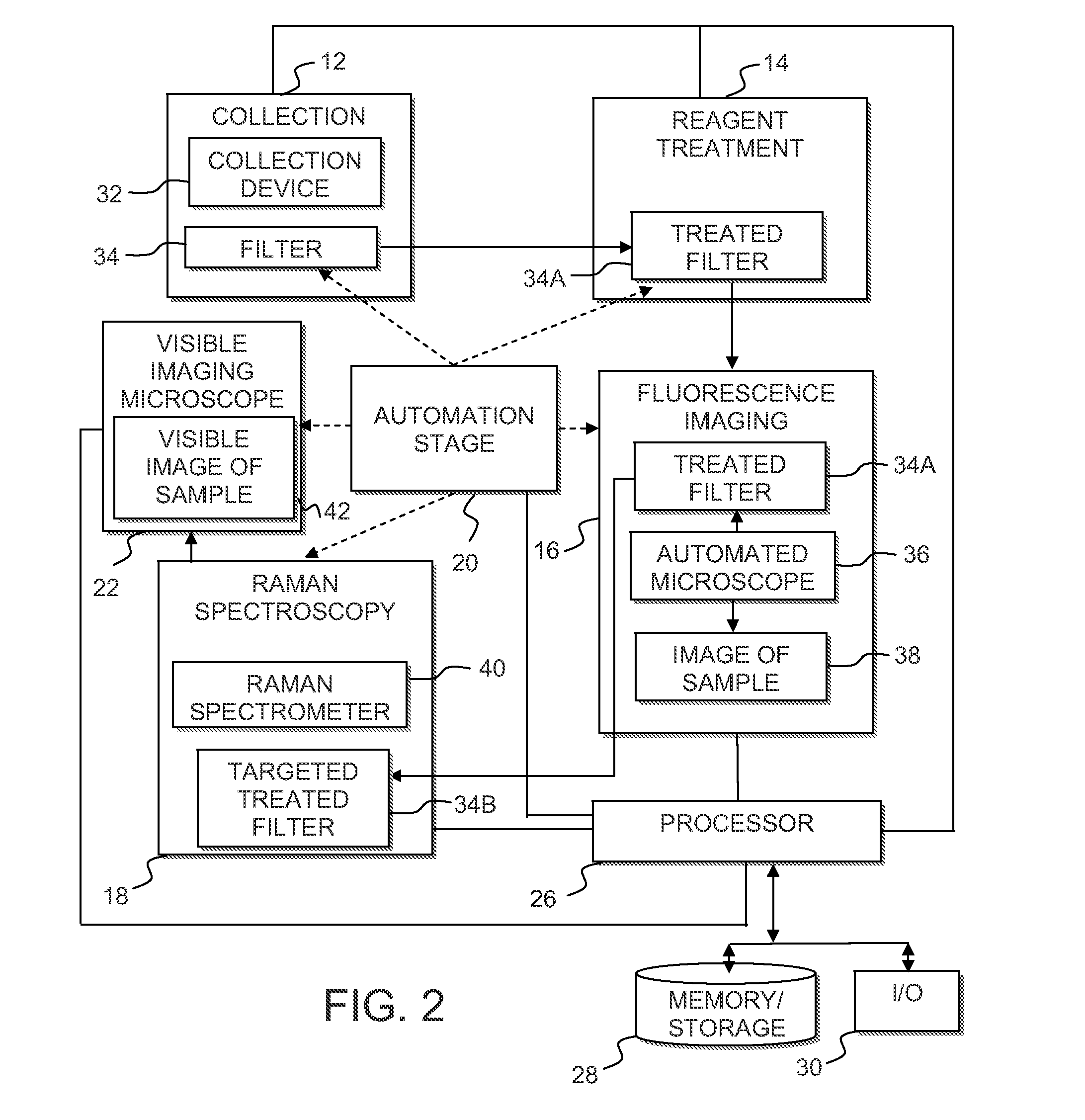Biological and chemical collection and detection
- Summary
- Abstract
- Description
- Claims
- Application Information
AI Technical Summary
Problems solved by technology
Method used
Image
Examples
Embodiment Construction
[0012]According to various aspects of the present invention, a fluorescence-cued Raman identification system is provided that utilizes fluorescence assays to detect one or more organisms of interest. The fluorescence assay may be a general assay for all / multiple types of viable organisms or alternatively, a specialized assay for targeting a specific organism or organisms.
[0013]In general, the above fluorescence assays, including non-specific assays, may be utilized to target viable organisms, such as viable cells, in either spore or vegetative states within collected samples. For example, a selected chemical fluorescence assay may be used for targeting viable organisms collected in a sample. The reaction of specific locations within the sample to the chemical fluorescence assay is used to select out and target regions of the collected sample that are of interest for further interrogation. Spectral data is collected from the targeted sample regions that were selected from within the ...
PUM
| Property | Measurement | Unit |
|---|---|---|
| size | aaaaa | aaaaa |
| fluorescence imaging | aaaaa | aaaaa |
| Raman spectroscopy | aaaaa | aaaaa |
Abstract
Description
Claims
Application Information
 Login to View More
Login to View More - R&D
- Intellectual Property
- Life Sciences
- Materials
- Tech Scout
- Unparalleled Data Quality
- Higher Quality Content
- 60% Fewer Hallucinations
Browse by: Latest US Patents, China's latest patents, Technical Efficacy Thesaurus, Application Domain, Technology Topic, Popular Technical Reports.
© 2025 PatSnap. All rights reserved.Legal|Privacy policy|Modern Slavery Act Transparency Statement|Sitemap|About US| Contact US: help@patsnap.com



